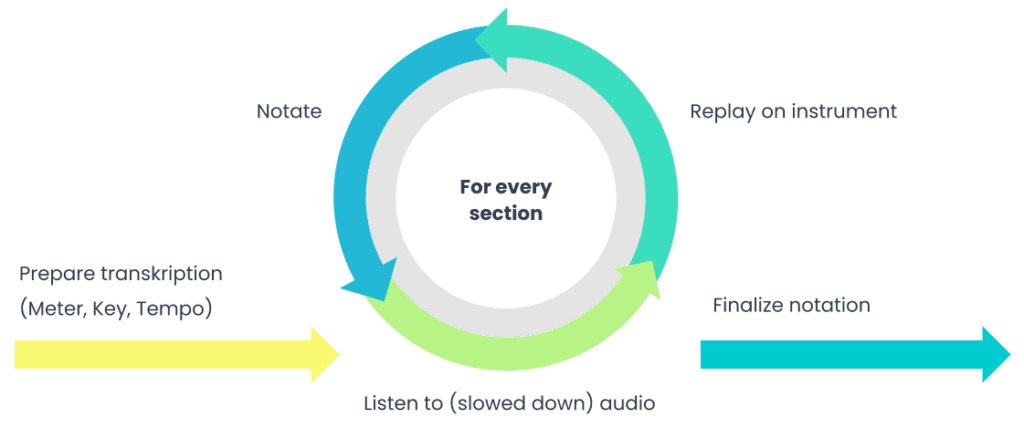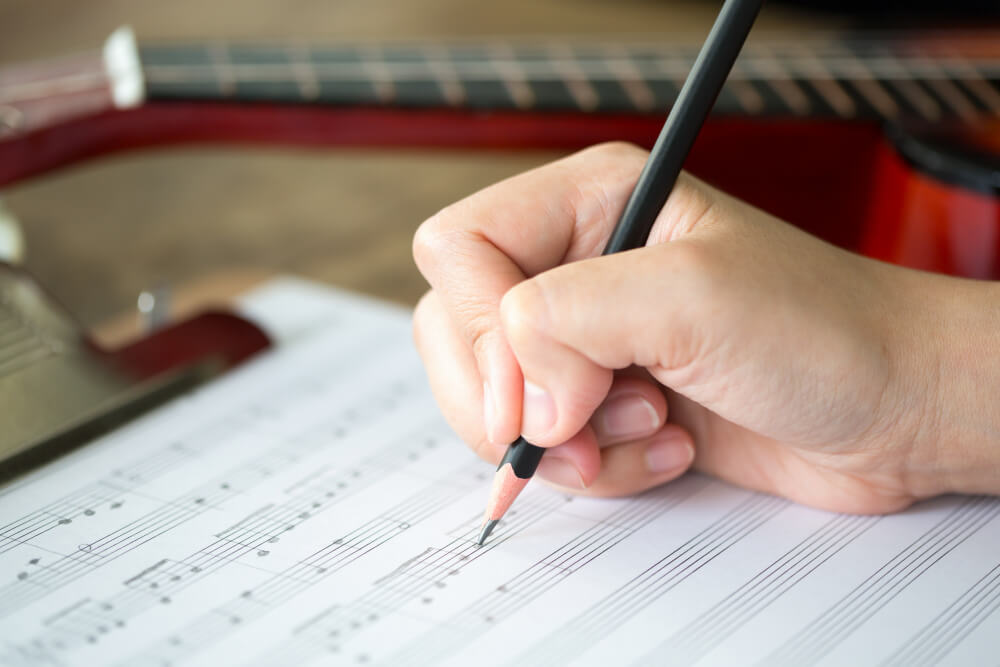Welcome to the fascinating world of music transcription! Whether you’re a budding musician eager to learn or a seasoned player looking to expand your skills, this guide is for you. We’re diving into the art of translating music from sound to paper – a journey that’s as rewarding as it is enriching. So, let’s get started and unlock the secrets of music transcription together!
What is Music Transcription?
Music transcription, at its core, is the art of translating audio into written notation. Think of it as a cartographer mapping the terrain of melodies, harmonies, and rhythms. This ancient practice dates back centuries, evolving from simple neumes in Gregorian chants to today’s complex modern notations. But why transcribe music? The reasons are as varied as the notes in a symphony. For some, it’s a way to capture and study the nuances of a performance. For others, it’s about preserving musical heritage or creating accessible formats for learning. In essence, transcription is the heartbeat of musical documentation, allowing us to understand and communicate musical ideas across generations. It’s a meticulous process that requires a keen ear, a deep understanding of music theory, and the patience to capture every nuance and subtlety of a piece. Whether you’re a classical enthusiast or a rock aficionado, mastering the art of transcription can deepen your appreciation and understanding of the music you love.
The Basics of Music Transcription
To get started with music transcription, you’ll need to know a few things:
- Musical Notation: This is the language of music. Understanding how to read and write musical notes, rhythms, and dynamics is essential.
- A Good Ear: Transcribing music is all about listening. The better you can hear and distinguish musical elements, the more accurate your transcription will be.
- Tools: This can range from a simple pencil and paper to sophisticated music notation software.
- Slow-Down Software: Tools like Audacity or Anytune allow you to slow down the music without altering the pitch, making it easier to hear and transcribe complex parts.
The Process of Transcribing Music
The process of transcribing music is akin to solving a complex puzzle, each piece representing a different musical element. The first step is immersive listening. Engage with the piece multiple times, absorbing its overall feel, structure, and nuances. This is not just passive listening; it’s active and analytical. Next, break the piece into manageable segments.

Focus on identifying and notating the melody – the song’s backbone. Then, decipher the harmony – the chords and intervals that provide depth and emotion. Rhythm comes next, capturing the beat and tempo that drive the piece. As you transcribe, remember to frequently cross-reference your work with the original recording. This iterative process of listening, writing, and comparing is crucial for accuracy. Regular revisions and edits are part of the journey, ensuring that your transcription faithfully represents the original music. With each piece you transcribe, your skills will sharpen, and your confidence will grow, paving the way for tackling more complex compositions in the future.
Challenges in Music Transcription
Transcribing music is not without its challenges, especially for those just beginning their transcription journey. One of the most significant hurdles is dealing with complex musical structures. Fast tempos, intricate rhythms, and dense harmonies can be overwhelming. It’s like trying to untangle a web of sounds, each thread representing a different musical element. Another challenge is poor-quality recordings. These can obscure nuances, making it difficult to discern pitches and rhythms accurately. Then there’s the issue of subjective interpretation. Music, especially when it comes to genres like jazz or blues, can have elements of improvisation and personal expression, which are hard to capture in standard notation. Overcoming these challenges requires patience, practice, and a keen ear. It’s a process of continuous learning and adaptation. Embrace these challenges as opportunities to grow and refine your skills. Each hurdle you overcome will make you a more proficient and versatile transcriber.
The Role of Technology in Music Transcription
In the realm of music transcription, technology has been a game-changer.

Gone are the days when transcribers relied solely on their ears and hand-written notation. Modern transcription tools have revolutionized the way we approach this craft. Software like Sibelius, Finale, and MuseScore offer intuitive platforms for creating professional-quality sheet music. These programs not only facilitate the notation process but also provide playback options, allowing transcribers to hear their work and make necessary adjustments. Additionally, slow-down software has become an indispensable tool. By allowing musicians to slow down a piece without distorting the pitch, these tools make it easier to pick apart complex passages and intricate details. However, it’s important to remember that technology is an aid, not a replacement for the human ear and interpretation. A successful transcriber balances the use of technology with their musical intuition and knowledge, ensuring that the essence and emotion of the original piece are faithfully captured.
Practical Applications of Music Transcription
The practical applications of music transcription are vast and varied, extending far beyond the realm of professional musicians. For hobby musicians and learners, transcription is a powerful tool for deepening musical understanding. It allows you to dissect your favorite songs, understand their structure, and learn how different elements come together. This not only enhances your playing skills but also enriches your overall musical knowledge. Additionally, transcription plays a crucial role in education. Teachers use transcriptions to create sheet music for pieces that might not have been notated, providing students with accessible learning material. Moreover, transcription is vital in preserving musical heritage. Many musical pieces, especially in genres like folk or traditional music, are passed down orally. Transcribing these pieces ensures that they are not lost to time and can be shared with future generations. Whether you’re using transcription to learn, teach, or preserve music, it’s a skill that adds immense value to your musical journey.
Enhancing Your Transcription Skills
Improving your transcription skills is a journey of continuous learning and practice. The first and most crucial step is regular practice. Start with simpler pieces and progressively take on more challenging compositions. This gradual approach helps build your listening skills, musical vocabulary, and notation accuracy. It’s also beneficial to transcribe a variety of genres. Each style of music, from classical to rock to jazz, offers unique challenges and learning opportunities. Joining online forums and communities can be incredibly helpful. These platforms allow you to share your work, receive feedback, and learn from others’ experiences. Additionally, consider taking online courses or workshops. These structured learning environments can provide valuable guidance and tips from experienced transcribers. Remember, enhancing your skills is not just about the technical aspects of transcription but also about developing an intuitive understanding of music. As you grow in your transcription journey, you’ll find that your appreciation and enjoyment of music deepen significantly.
Conclusion
In conclusion, music transcription is a fascinating and rewarding endeavor that offers immense benefits to musicians of all levels. It’s a skill that not only enhances your musical abilities but also allows you to connect with music on a deeper level. As we’ve explored, the journey of becoming proficient in transcription involves understanding the basics, embracing the challenges, and leveraging technology to your advantage. Speaking of technology, companies like Klangio are leading the way in automatic music transcription tools, providing invaluable assistance to both novices and experienced transcribers. These tools can serve as a starting point, helping you to get a feel for a piece before diving into the finer details manually. Remember, transcription is a skill that evolves with practice and patience. Whether you’re a hobby musician or aspiring to professional heights, the world of music transcription is rich with opportunities for growth, discovery, and enjoyment. Happy transcribing!

